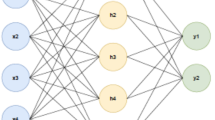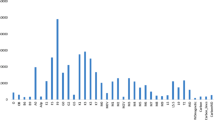Abstract
Automatic classification of stellar spectra contributes to the study of the structure and evolution of the Milky Way and star formation. Currently available methods exhibit unsatisfactory spectral classification accuracy. This study investigates a method called DSRL, which is primarily used for automated and accurate classification of LAMOST stellar spectra based on MK classification criteria. The method utilizes discrete wavelet transform to decompose the spectra into high-frequency and low-frequency information, and combines residual networks and long short-term memory networks to extract both high-frequency and low-frequency features. By introducing self-distillation (DSRL-1, DSRL-2, and DSRL-3), the classification accuracy is improved. DSRL-3 demonstrates superior performance across multiple metrics compared to existing methods. In both three-class(F ,G ,K) and ten-class(A0, A5, F0, F5, G0, G5, K0, K5, M0, M5) experiments, DSRL-3 achieves impressive accuracy, precision, recall, and F1-Score results. Specifically, the accuracy performance reaches 94.50% and 97.25%, precision performance reaches 94.52% and 97.29%, recall performance reaches 94.52% and 97.22%, and F1-Score performance reaches 94.52% and 97.23%. The results indicate the significant practical value of DSRL in the classification of LAMOST stellar spectra. To validate the model, we visualize it using randomly selected stellar spectral data. The results demonstrate its excellent application potential in stellar spectral classification.


















Similar content being viewed by others
Data Availability
All dataset used in this work are publicly available. Details on how to access the data can be found On the websites: http://www.lamost.org/dr8/v2.0/.
References
Han, Z.: Lamost’s view on the gaia-sausage-enceladus merger event. Sci. China Phys. Mech. Astron. 64, 1–1 (2021)
Struve, O.: On the origin of bright lines in spectra of stars of class b. AJ. 73, 94 73, 94 (1931)
Smith, J., Draine, B., Dale, D., Moustakas, J., Kennicutt, R., Jr., Helou, G., Armus, L., Roussel, H., Sheth, K., Bendo, G., et al.: The mid-infrared spectrum of star-forming galaxies: global properties of polycyclic aromatic hydrocarbon emission. A. J. 656(2), 770 (2007)
Johnson, H.L., Morgan, W.: Fundamental stellar photometry for standards of spectral type on the revised system of the yerkes spectral atlas. AJ. 117, 313 117, 313 (1953)
Wang, M., Wu, J., Jiang, B., Zhang, Y.: Searching for galactic h ii regions from the lamost database based on the multihead wdcnn model. AJSS 267(2), 39 (2023)
York, D.G., Adelman, J., Anderson, J.E., Jr., Anderson, S.F., Annis, J., Bahcall, N.A., Bakken, J., Barkhouser, R., Bastian, S., Berman, E., et al.: The sloan digital sky survey: Technical summary. A. J. 120(3), 1579 (2000)
Eisenstein, D., Weinberg, D.H., Agol, E., Aihari, H., Aubourg, E., Bailey, S., Kollmeier, J., Shetrone, M.D., Schlesinger, K., Smith, V.V., Yanny, B., Malanushenko, E., Malanushenko, V., Oravetz, D., Reid, I.N., Rix, H.-W.: Sdss-iii: Massive spectroscopic surveys of the distant universe, the milky way, and extra-solar planetary systems. A. J. 142, 72 (2011)
Blanton, M.R., Roweis, S.: K-corrections and filter transformations in the ultraviolet, optical, and near-infrared. A. J. 133(2), 734 (2007)
Stoughton, C., Lupton, R.H., Bernardi, M., Blanton, M.R., Burles, S., Castander, F.J., Connolly, A., Eisenstein, D.J., Frieman, J.A., Hennessy, G., et al.: Sloan digital sky survey: early data release. A. J. 123(1), 485 (2002)
Kimura, M., Maihara, T., Iwamuro, F., Akiyama, M., Tamura, N., Dalton, G.B., Takato, N., Tait, P., Ohta, K., Eto, S., et al.: Fibre multi-object spectrograph (fmos) for the subaru telescope. P. A. S. J. 62(5), 1135–1147 (2010)
Liu, W., Zhu, M., Dai, C., He, D., Yao, J., Tian, H., Wang, B., Wu, K., Zhan, Y., Chen, B., et al.: Classification of large-scale stellar spectra based on deep convolutional neural network. M. N. R. A. S. 483(4), 4774–4783 (2019)
Perryman, M., Boer, K.S., Gilmore, G., Høg, E., Lattanzi, M., Lindegren, L., Luri, X., Mignard, F., Pace, O., De Zeeuw, P.: Gaia: Composition, formation and evolution of the galaxy. A & A 369(1), 339–363 (2001)
Munari, U.: GAIA Spectroscopy: Science and Technology vol. 298, (2003)
Zhao, G., Zhao, Y.-H., Chu, Y.-Q., Jing, Y.-P., Deng, L.-C.: Lamost spectral survey-an overview. R. A. A. 12(7), 723 (2012)
Cui, X.-Q., Zhao, Y.-H., Chu, Y.-Q., Li, G.-P., Li, Q., Zhang, L.-P., Su, H.-J., Yao, Z.-Q., Wang, Y.-N., Xing, X.-Z., et al.: The large sky area multi-object fiber spectroscopic telescope (lamost). R. A. A. 12(9), 1197 (2012)
Luo, A.-L., Zhao, Y.-H., Zhao, G., Deng, L.-C., Liu, X.-W., Jing, Y.-P., Wang, G., Zhang, H.-T., Shi, J.-R., Cui, X.-Q., et al.: The first data release (dr1) of the lamost regular survey. R. A. A. 15(8), 1095 (2015)
Li, H.-N., Zhao, G., Christlieb, N., Wang, L., Wang, W., Zhang, Y., Hou, Y., Yuan, H.: Spectroscopic analysis of metal-poor stars from lamost: early results. A. J. 798(2), 110 (2015)
Corbally, C.J., Gray, R.O., Garrison, R.F.: The mk process at 50 years. a powerful tool for astrophysical insight. The MK Process at 50 Years: A Powerful Tool for Astrophysical Insight 60 (1994)
Liu, C., Cui, W.-Y., Zhang, B., Wan, J.-C., Deng, L.-C., Hou, Y.-H., Wang, Y.-F., Yang, M., Zhang, Y.: Spectral classification of stars based on lamost spectra. R. A. A. 15(8), 1137 (2015)
Vilavicencio-Arcadia, E., Navarro, S.G., Corral, L.J., Martínez, C.A., Nigoche, A., Kemp, S.N., Ramos-Larios, G.: Application of artificial neural networks for the automatic spectral classification. Math. Probl. Eng. 2020, 1–15 (2020)
Wang, K., Guo, P., Luo, A.-L.: A new automated spectral feature extraction method and its application in spectral classification and defective spectra recovery. M. N. R. A. S. 465(4), 4311–4324 (2017)
Li, X.-R., Lin, Y.-T., Qiu, K.-B.: Stellar spectral classification and feature evaluation based on a random forest. R. A. A. 19(8), 111 (2019)
Kuntzer, T., Tewes, M., Courbin, F.: Stellar classification from single-band imaging using machine learning. A & A 591, 54 (2016)
Dafonte, B.: A blended artificial intelligence approach for spectral classification of stars in massive astronomical surveys. Entropy 22(5) (2020)
Sharma, K., Singh, H.P., Gupta, R., Kembhavi, A., Vaghmare, K., Shi, J., Zhao, Y., Zhang, J., Wu, Y.: Stellar spectral interpolation using machine learning. M. N. R. A. S. 496(4), 5002–5016 (2020)
Sharma, K., Kembhavi, A., Kembhavi, A., Sivarani, T., Abraham, S., Vaghmare, K.: Application of convolutional neural networks for stellar spectral classification. M. N. R. A. S. 491(2), 2280–2300 (2020)
Zhang, L., Bao, C., Ma, K.: Self-distillation: Towards efficient and compact neural networks. IEEE Trans. Pattern Anal. Mach. Intell. 44(8), 4388–4403 (2021)
Lei, Z., He, R., Németh, P., Vos, J., Zou, X., Hu, K., Xiao, H., Yan, H., Zhao, J.: Hot subdwarf stars identified in lamost dr8 with single-lined and composite spectra. A. J. 942(2), 109 (2023)
...Xiang, M.S., Liu, X.W., Yuan, H.B., Huang, Y., Huo, Z.Y., Zhang, H.W., Chen, B.Q., Zhang, H.H., Sun, N.C., Wang, C., Zhao, Y.H., Shi, J.R., Luo, A.L., Li, G.P., Wu, Y., Bai, Z.R., Zhang, Y., Hou, Y.H., Yuan, H.L., Li, G.W., Wei, Z.: The LAMOST stellar parameter pipeline at Peking University - lsp3. M. N. R. A. S. 448(1), 822–854 (2015)
Liu, C., Cui, W.-Y., Zhang, B., Wan, J.-C., Deng, L.-C., Hou, Y.-H., Wang, Y.-F., Yang, M., Zhang, Y.: Spectral classification of stars based on lamost spectra. Res. Astron. Astrophys. 15(8), 1137 (2015)
Jing-Min, Z., Chen-Ye, M., Lu, W., Li-Ting, D., Ting-Ting, X., Lin-Pin, A., Wei-Hong, Z.: A new stellar spectral feature extraction method based on two-dimensional fourier spectrum image and its application in the stellar spectral classification based on deep network. Chin. Astron. Astrophys. 44(3), 334–344 (2020)
Hu, J., Shen, L., Sun, G.: Squeeze-and-excitation networks. In: Proceedings of the IEEE Conference on Computer Vision and Pattern Recognition, pp. 7132–7141 (2018)
Daubechies, I.: The wavelet transform, time-frequency localization and signal analysis. IEEE Trans. Inf. Theory 36(5), 961–1005 (1990). https://doi.org/10.1109/18.57199
Too, J., Abdullah, A.R., Saad, N.M., Ali, N.M., Zawawi, T.N.S.T.: Exploring the relation between emg pattern recognition and sampling rate using spectrogram. J. Electr. Eng. Technol. 14, 947–953 (2019)
Canal, M.R.: Comparison of wavelet and short time fourier transform methods in the analysis of emg signals. J. Med. Syst. 34, 91–94 (2010)
Saravanan, N., Ramachandran, K.: Incipient gear box fault diagnosis using discrete wavelet transform (dwt) for feature extraction and classification using artificial neural network (ann). Expert Syst. Appl. 37(6), 4168–4181 (2010)
Shemi, P., Shareena, E.: Analysis of ecg signal denoising using discrete wavelet transform. In: 2016 IEEE International Conference on Engineering and Technology (ICETECH), pp. 713–718 (2016). IEEE
He, K., Zhang, X., Ren, S., Sun, J.: Deep residual learning for image recognition. In: Proceedings of the IEEE Conference on Computer Vision and Pattern Recognition, pp. 770–778 (2016)
Chernodub, A., Nowicki, D.: Sampling-based gradient regularization for capturing long-term dependencies in recurrent neural networks. In: Neural Information Processing: 23rd International Conference, ICONIP 2016, Kyoto, Japan, October 16–21, 2016, Proceedings, Part II 23, pp. 90–97 (2016). Springer
Vorontsov, E., Trabelsi, C., Kadoury, S., Pal, C.: On orthogonality and learning recurrent networks with long term dependencies. In: International Conference on Machine Learning, pp. 3570–3578 (2017). PMLR
Dong, X., Bao, J., Zheng, Y., Zhang, T., Chen, D., Yang, H., Zeng, M., Zhang, W., Yuan, L., Chen, D., et al: Maskclip: Masked self-distillation advances contrastive language-image pretraining. In: Proceedings of the IEEE/CVF Conference on Computer Vision and Pattern Recognition, pp. 10995–11005 (2023)
Xing, H., Xiao, Z., Zhan, D., Luo, S., Dai, P., Li, K.: Selfmatch: Robust semisupervised time-series classification with self-distillation. Int. J. Intell. Syst. 37(11), 8583–8610 (2022)
Prechelt, L.: Automatic early stopping using cross validation: quantifying the criteria. Neural Netw. 11(4), 761–767 (1998)
Acknowledgements
We thank the anonymous referee for valuable helpful comments and suggestions. This work is supported by the National Key Research and Development Program (2022YFF0711500), the National Natural Science Foundation of China (12273077), the National Natural Science Foundation of China (11803022), and Innovation Fund of Engineering Research Center for Integration and Application of E-Learning Technology, Ministry of Education(1221004).
Author information
Authors and Affiliations
Contributions
H.L. wrote the main manuscript text, and Q.Z. and C.Z. draw the figures, C.Z., D.F., Y.W. and Y.C. gave suggestions for revision. All authors reviewed the manuscript.
Corresponding author
Ethics declarations
Competing interests
The authors declare no competing interests.
Rights and permissions
Springer Nature or its licensor (e.g. a society or other partner) holds exclusive rights to this article under a publishing agreement with the author(s) or other rightsholder(s); author self-archiving of the accepted manuscript version of this article is solely governed by the terms of such publishing agreement and applicable law.
About this article
Cite this article
Li, H., Zhao, Q., Zhang, C. et al. DSRL: A low-resolution stellar spectral of LAMOST automatic classification method based on discrete wavelet transform and deep learning methods. Exp Astron 57, 20 (2024). https://doi.org/10.1007/s10686-024-09940-0
Received:
Accepted:
Published:
DOI: https://doi.org/10.1007/s10686-024-09940-0




